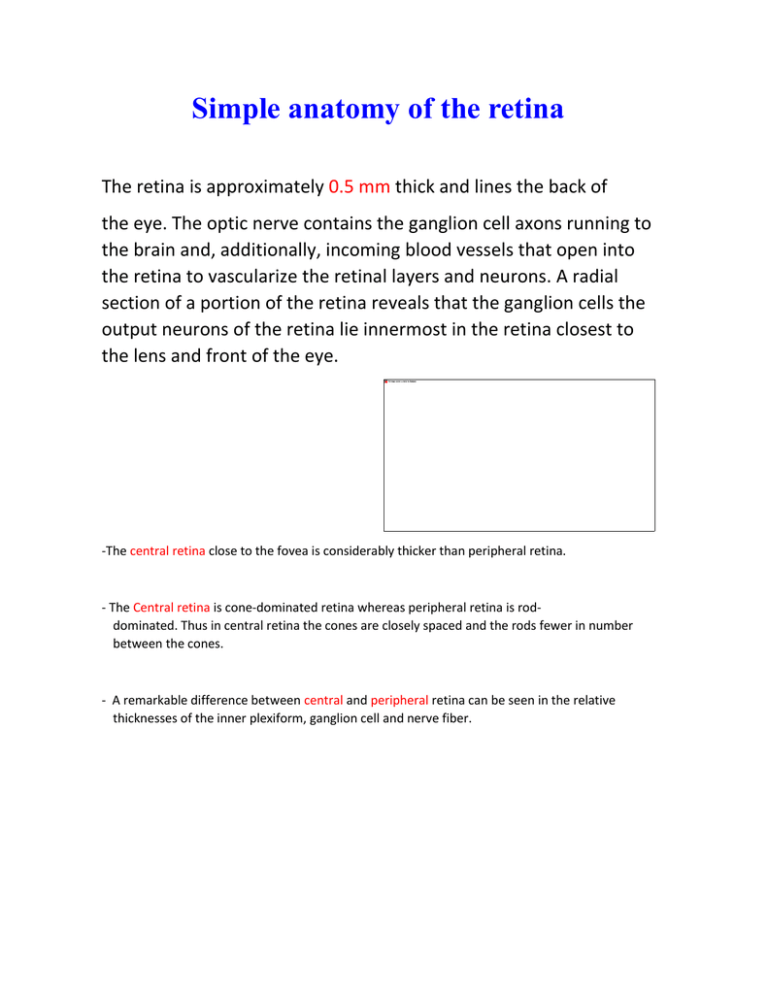Simple anatomy of the retina
advertisement

Simple anatomy of the retina The retina is approximately 0.5 mm thick and lines the back of the eye. The optic nerve contains the ganglion cell axons running to the brain and, additionally, incoming blood vessels that open into the retina to vascularize the retinal layers and neurons. A radial section of a portion of the retina reveals that the ganglion cells the output neurons of the retina lie innermost in the retina closest to the lens and front of the eye. -The central retina close to the fovea is considerably thicker than peripheral retina. - The Central retina is cone-dominated retina whereas peripheral retina is roddominated. Thus in central retina the cones are closely spaced and the rods fewer in number between the cones. - A remarkable difference between central and peripheral retina can be seen in the relative thicknesses of the inner plexiform, ganglion cell and nerve fiber. Muller cells are the radial glial cells of the retina .The outer limiting membrane of (OLM)the retina is formed from adherents junctions between Muller cells and photoreceptor cell inner segments. -The OLM forms a barrier between the sub retinal space, into which the inner and outer segments of the photoreceptors project to be in close association with the pigment epithelial layer behind the retina, and the neural retina prop. The center of the fovea is known as the fovea pit (Polyak, 1941) and is a highly specialized region of the retina different again from central and peripheral retina we have considered so far. The foveal pit is an area where cone photoreceptors are concentrated at maximum density with exclusion of the rods, and arranged at their most efficient packing density which is in a hexagonal mosaic. -The whole fovea area including fovea pit, fovea slope, Para fovea and perifovea is considered the macula of the human eye. Familiar to ophthalmologists is a yellow pigmentation to the macular area known as the macula luteal. -The yellow pigment that forms the macula luteal in the fovea can be clearly demonstrated by viewing a section of the fovea in the microscope with blue light. The dark pattern in the fovea pit extending out to the edge of the fovea slope is caused by the macular pigment distribution. -The human retina is a delicate organization of neurons, glia and nourishing blood vessels. In some eye diseases, the retina becomes damaged or compromised, and degenerative changes set in that eventually lead to serious damage to the nerve cells that carry the vital mesages about the visual image to the brain. -The macular area and fovea become compromised due to the pigment epithelium behind the retina degenerating and forming druse and allowing leakage of fluid behind the fovea.




